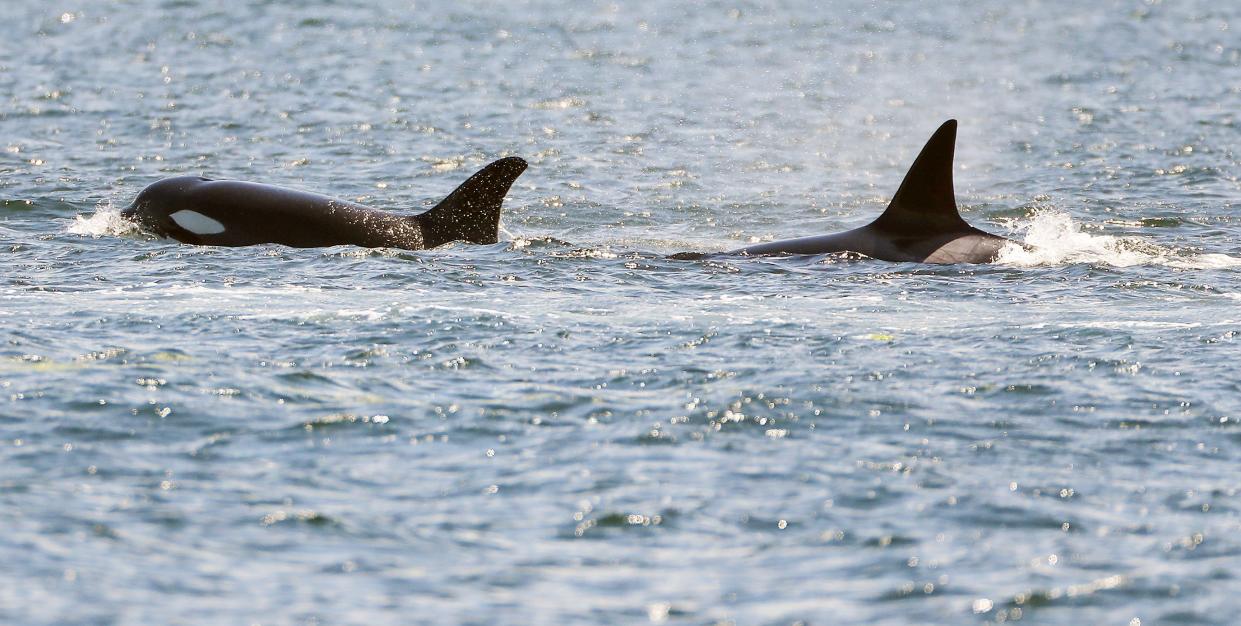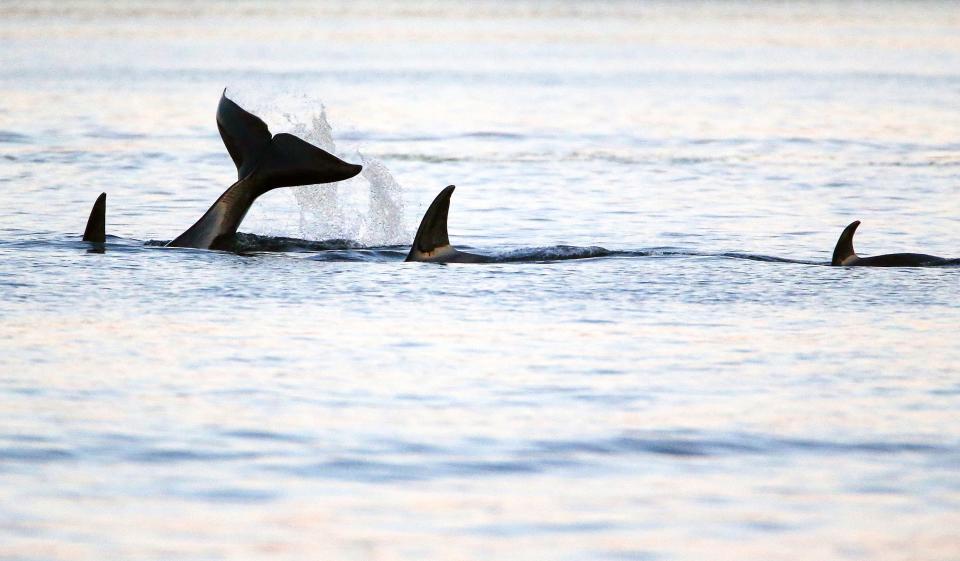Bigg's killer whales swim around Sinclair Inlet looking for seals to feast on

Bigg’s killer whales made their appearance along Kitsap shorelines and in Sinclair Inlet, with a group of seven whales swimming around, searching for food during seal pup season.
Erin Gless, executive director of the Pacific Whale Watch Association, said the group in Sinclair Inlet are the T65As. They can sometimes get into trouble pushing around boats, she said.
“These two families, the T65A's and T77's, have been traveling together for the better part of the last two months picking off harbor seals during the pupping season. The T65A's especially have a reputation for being very 'urban' whales,” she said.
This group has been seen for the past few weeks down south near Olympia but started making their way north in the Puget Sound on Thursday.
“It’s harbor seal pup season, so we’re pretty sure that’s what brings them down,” she said. These orcas don’t migrate, so as long as there’s food they can be seen in the area at any time of year. Seal pup season usually brings more sightings though, she said. In July, the Orca Behavior Institute said there were sightings of these mammal-eating orcas every single day.

In Washington state, the waters are home to the mammal-eating Bigg’s killer whales and the endangered Southern Residents, which feed on salmon.
Bigg’s killer whale sightings jumped last year, with over a thousand sightings during 2021. According to Pacific Whale Watch Association (PWWA), Bigg’s killer whales were most frequently documented in the region last year, followed by humpback whales, gray whales and minke whales.
Bigg’s killer whales feed on marine mammals like seals and sea lions. Their population is growing at more than 4% per year, according to Fisheries and Oceans Canada.
They’ve also been spotted more frequently in Hood Canal, with their breaches and blowholes dazzling onlookers and those taking photos from the shore.
Gless reminds boaters to keep a distance. A 300-yard distance is required for the endangered Southern Residents, and a 200-yard distance is needed for the Bigg’s. If boaters can’t tell the difference, they should just allow the whales extra room, Gless said. Those who see the mammal-hunting orcas in the area should be sure to give them the required 200 yards of distance, and that if the curious whales approach, stay calm, turn off your engines or "raft up" with others if in a kayak until the whales pass.
This article originally appeared on Kitsap Sun: Bigg's killer whales swim around Sinclair Inlet looking for seals

